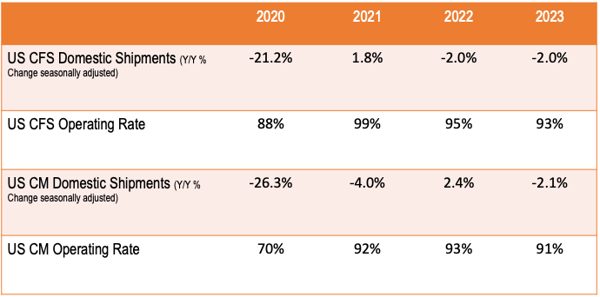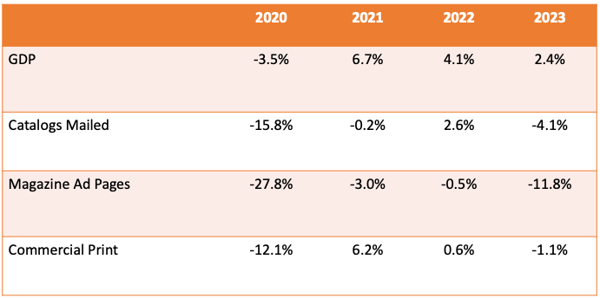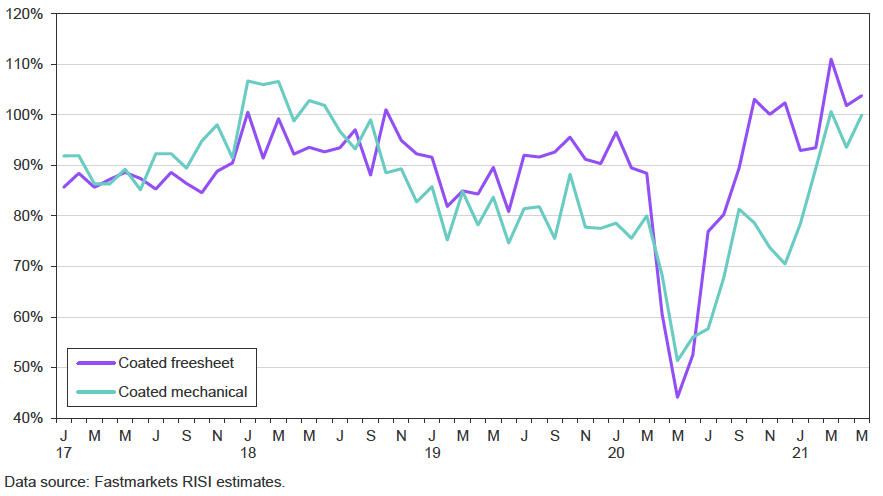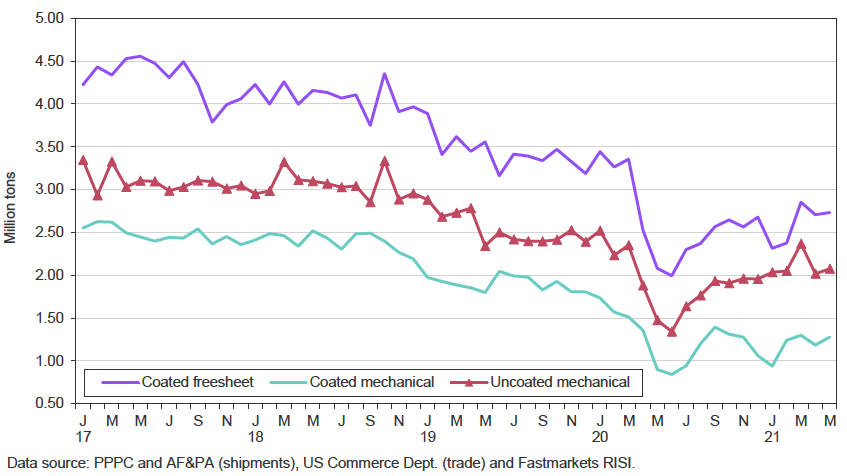- All graphic paper grades and basis weights and finishes are oversold for Q3 with orders exceeding salable capacity.
- All paper manufacturers have moved to an allocation/reservation system.
- Orders that are entered that are not acknowledged by a mill will not be manufactured.
The main reasons for the decrease in paper supply are low inventory in the supply chain coming out of the COVID-19 pandemic, paper machine conversions, as well as temporary and permanent domestic capacity closures, including Verso’s Wisconsin Rapids, WI, coated freesheet (CFS) 540,000 tons/yr mill. Typically, offshore imports would be expected to quickly fill the gap between domestic supply and demand, as has often occurred after major rounds of North American printing & writing (P&W) capacity rationalization. However, despite rapidly-rising price levels, imports have not expanded to relieve the domestic market due to disruptions in global shipping markets that have made international transport difficult and quadrupled the cost of freight containers.
Operating Rates Near All-Time Highs
Operating rates have ascended dramatically versus the depressed pandemic levels, to over 100% in many cases for coated paper and newsprint and above 90% for uncoated freesheet and uncoated mechanical. Although demand continues to show signs of solidifying, much of the increase in operating rates can be assigned to the massive wave of capacity closures, idled machines, and conversions that followed the pandemic-driven collapse of demand. So much capacity has come out of the North American market that a lack of availability is part of the reason demand has not recovered further; buyers are having difficulty acquiring needed paper from oversold mills, much less rebuilding inventories depleted in 2020. (RISI)
Demand and Operating Rate Forecasts (RISI)

U.S. Economy and Paper End-Use Indicators

N.A. Coated Paper Operating Rates

N.A. Apparent Consumption





